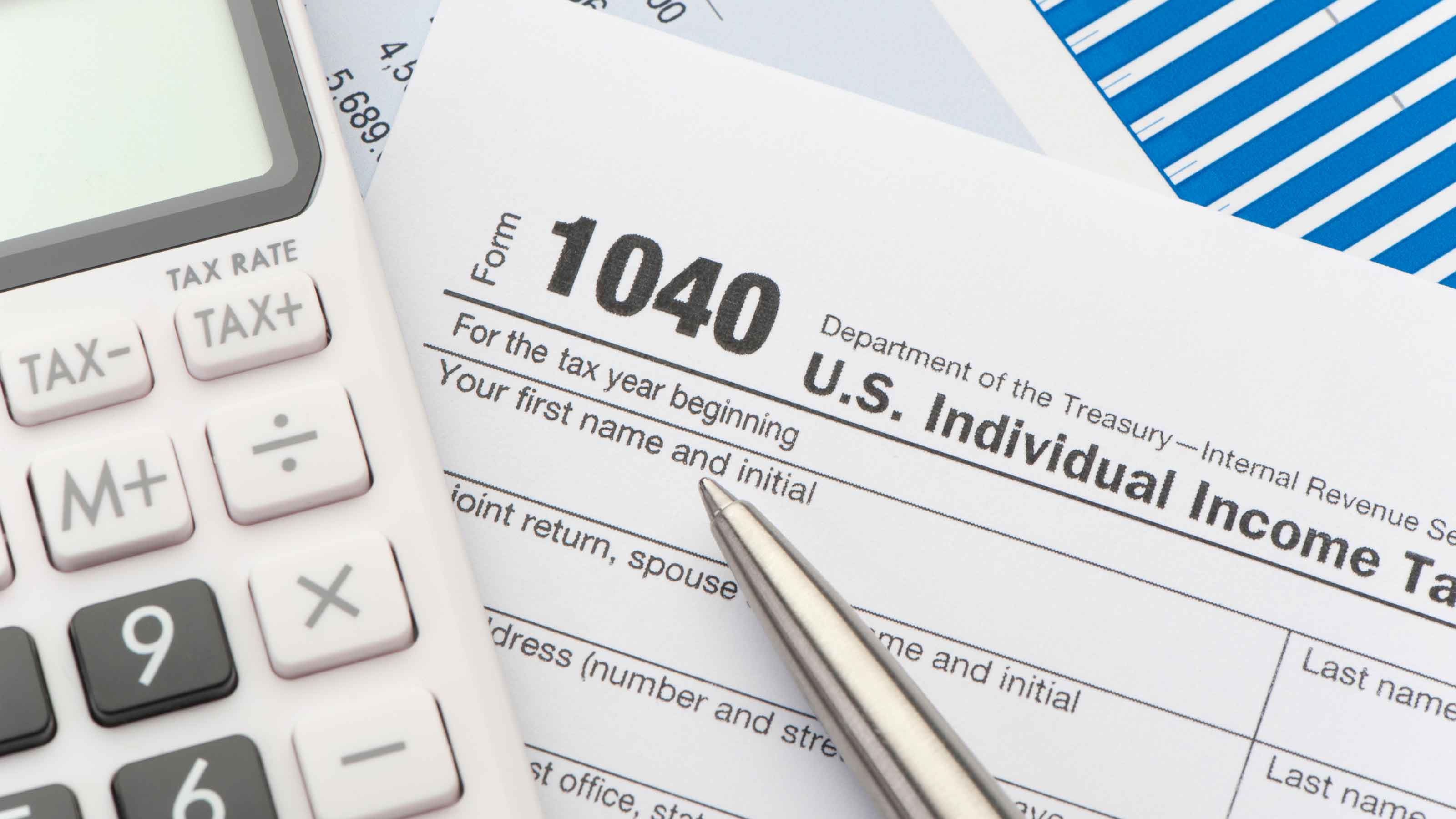Tax-Saving Secrets
New deductions and credits can slash your 2009 tax bill.

Forget everything you thought you knew about filing your taxes. With so many changes to tax rules for 2009 resulting from last year's massive economic-stimulus package, you may be able to claim some new tax breaks, particularly if you bought a house or a car, sent a kid to college, made energy-efficient home improvements, or collected unemployment benefits.
And even if none of those special situations applies to you, you'll still save on your taxes if your 2009 income was about the same as it was the year before -- thanks to new, inflation-adjusted income-tax brackets and higher amounts for the standard deduction (which 70% of taxpayers claim) and the personal-exemption amount, which every taxpayer can claim for each member of his or her household.
The standard deduction is $5,700 for individuals (up $250 from 2008); $8,350 for single heads of household (up $350); and $11,400 for married couples filing jointly (up $500). In addition, the $3,650-per-person personal exemption is up $150 from 2008. Tax brackets are wider, too. For a married couple filing a joint return, for example, the taxable-income threshold separating the 15% bracket from the 25% bracket is $67,900, up from $65,100 in 2008. And there's an added benefit for taxpayers in the 10% and 15% tax brackets: They pay zero capital-gains taxes on profits from investments they sold in 2009 (as long as they owned them for more than a year).

Sign up for Kiplinger’s Free E-Newsletters
Profit and prosper with the best of expert advice on investing, taxes, retirement, personal finance and more - straight to your e-mail.
Profit and prosper with the best of expert advice - straight to your e-mail.
Plus, most workers are eligible for the new Making Work Pay credit, worth up to $400 for individuals and $800 for married couples, depending on income. Although you probably received the money in the form of reduced tax withholding from your paycheck throughout the year -- rather than a bigger refund now -- you still have to claim the credit on your tax return to ensure that it is counted against your 2009 tax liability (see Tax Forms: Cracking the Code). If you don't, it could boost your tax bill or reduce your refund.
At times, filling out your 2009 return may feel as if you're taking a multiple-choice quiz, guessing at the best option to maximize your tax savings. If you're not already using tax-preparation software or working with a professional tax preparer, it may be time to seek help (see Tax Prep: Most Can File for Free).
Education breaks
With a sizable, six-figure income, Timothy and Kathy Cormier of Fairfax, Va., never expected to qualify for a tax credit to ease the pain of paying college expenses for two of their three children. But this year is different.
The new American Opportunity credit is worth up to $2,500 per student each year during the first four years of college. For most students this break replaces the Hope credit, which was good only for the first two years of college. The American Opportunity credit covers 100% of the first $2,000 of expenses, including tuition, fees and books, and 25% of the next $2,000. You can claim the full $2,500 credit if you are single and your income is $80,000 or less ($160,000 if you're married filing jointly). You get a partial credit if you are single with income up to $90,000 ($180,000 for joint filers). The Cormiers can multiply that tax break by two, saving them up to $5,000 on their 2009 tax bill.
But here's where it gets confusing. Taxpayers with similarly generous incomes (up to $80,000 for single or $160,000 for married filers) can claim a $2,000 tax deduction for higher-education costs even if they don't itemize -- but you can't claim both the credit and the deduction. So which should you choose? Take the credit if you can. A credit reduces your tax liability dollar for dollar, whereas a deduction merely reduces the amount of income that is taxed. In the 25% bracket, for example, a $2,000 deduction reduces your taxes by just $500, while a $2,000 credit reduces your taxes by the full $2,000.
Simple choice, right? Not so fast. The American Opportunity credit applies only to the first four years of college, so anyone paying bills for graduate school would want to choose the deduction -- that is, unless they qualify for the even more valuable Lifetime Learning credit, which has lower income-eligibility caps than the deduction. The credit is available for 20% of the expense of any posthigh school classes up to a maximum $2,000 credit per tax return. For the full credit, your income can't top $50,000 if you're single or $100,000 if you're married filing jointly. A partial credit is available to those with income up to $60,000 ($120,000 if married).
And the choices don't end there. Parents with students attending college in one of the ten midwestern states that were declared disaster areas after the 2008 floods should compare their choices of credits to determine which saves them the most money, says John Roth, a senior tax analyst with CCH, a provider of tax information. The Hope and Lifetime Learning credits for the midwestern disaster area are twice the usual amounts and have been expanded to include room and board as qualifying expenses (but the credits are subject to the same income-eligibility limits).
The maximum Hope credit for freshmen and sophomores is $3,600 per student. But if you claim a Hope credit for a student in the midwestern disaster area, you cannot claim an American Opportunity credit for any student in the same year. The maximum Lifetime Learning credit for any posthigh school courses taken in the disaster area is $4,000 per tax return. (Parents of students attending colleges in Arkansas, Illinois, Indiana, Iowa, Kansas, Michigan, Minnesota, Missouri, Nebraska and Wisconsin are eligible.)
Home-buyer credit
New-home shoppers celebrated when the popular $8,000 first-time home buyer's credit was extended to contracts signed through April 30, 2010. But you might have missed some of the nuances. For example, income-eligibility limits for this credit differ depending on the date of purchase; and current homeowners who buy a new home now qualify for a tax credit, too.
If you bought your first home between January 1 and November 6, 2009, you are eligible for a maximum credit of $8,000 as long as your income doesn't exceed $75,000 if you're single or $150,000 if you're married filing jointly. You're considered a first-time buyer if you didn't own a principal residence during the three years prior to closing on the new home.
But the rules changed for purchases after November 6. Income-eligibility limits were increased to $125,000 for the full credit for single filers, phasing out at $145,000, and to $225,000 for joint filers, phasing out at $245,000. Homeowners who have lived in the same principal residence for at least five out of the past eight years also became eligible for a 10% credit of up to $6,500 on the purchase of a new home after November 6. To claim the credit, buyers must enter a binding contract by April 30 and must close on the sale before July 1. Members of the military who are serving overseas have an extra year of eligibility (see A Roster of Tax Breaks for Military Families).
To claim the credit, you must file Form 5405, "First-Time Homebuyer Credit," and attach a copy of your settlement statement or a copy of the certificate of occupancy for newly constructed homes. Homeowners must provide proof of five consecutive years of ownership, such as mortgage-interest statements, property-tax records or homeowners insurance.
Because of the new documentation requirements, you can't file your tax return electronically if you claim the home-buyer credit. Print it out and mail it with supporting documents to the IRS. Be prepared to wait. Refunds for paper returns normally take from four to eight weeks, compared with about ten days for e-filed returns. You can file for the credit on your 2009 return even if you close after April 15 by filing an extension or amending your return.
Home-energy credit
So maybe you didn't buy a new house last year, but you did make some energy-efficient home improvements. You may claim a credit for 30% of the cost of eligible home improvements on your principal residence, up to a maximum of $1,500. The credit applies to insulation and to energy-efficient exterior windows and doors, heat pumps, furnaces, central air conditioners, and water heaters. The new rule is in effect for both 2009 and 2010, so if you claim the full $1,500 credit on your 2009 return, you are not eligible for additional credits in 2010.
Another residential tax credit, designed to spur investment in alternative-energy equipment such as solar hot-water heaters, geothermal heat pumps and wind turbines for new and existing homes, is worth 30% of the cost of such items, including installation, with no cap on the amount.
New-vehicle deduction
If you sank some money into new wheels last year, whether it was a car, a motorcycle, a light truck or a motor home, there's a tax break for that, too. As long as you purchased the new vehicle anytime after February 16, 2009, you may be able to deduct the state or local sales tax or excise tax. The deduction is limited to the tax you paid on up to $49,500 of the purchase price, but there is no limit on the number of eligible vehicles.
To qualify for the full deduction, your income can't top $125,000 if you're single or $250,000 if you're married filing jointly. A partial deduction is available for individuals with income between $125,000 and $135,000 and for joint filers with income between $250,000 and $260,000.
Taxpayers can claim the new-vehicle sales-tax break whether or not they itemize their deductions. But some itemizers who bought a new car last year can snag a double tax savings by deducting both their state income taxes, as part of their itemized deductions on Schedule A, and claiming the special sales-tax deduction on the same form.
Itemizers may even be able to claim a tax break on the sales tax they paid on new vehicles purchased before the February 17 start date or even the sales taxes they paid on used or leased vehicles acquired in 2009. But it makes sense only under certain circumstances. To do so, you must choose to deduct state sales taxes rather than state income taxes on Schedule A. In most cases, income taxes will represent the bigger deduction and are the smarter choice. But those with little taxable income, such as retirees, or residents of states with no income tax, such as Florida or Texas, get a better deal with the sales-tax deduction. You can base the write-off on actual receipts or use IRS tables keyed to household income, size and state. Plus, if you use the tables, you can add sales taxes paid on big-ticket items, such as cars, boats, RVs and building materials. Of course, itemizing makes sense only if it gives you a bigger write-off than the standard deduction.
Break for unemployed
With the highest jobless rate in decades, many Americans are receiving unemployment benefits for the first time. The first $2,400 of benefits collected in 2009 is exempt from federal income tax, but the exclusion isn't automatic. You must subtract $2,400 from the amount of total unemployment compensation shown on Form 1099-G to determine the taxable amount to report on your Form 1040 (or 1040A or 1040EZ). If both spouses received benefits, each can exclude $2,400 from taxable income.
A lower income in 2009 may make it easier to deduct job-hunting expenses, such as résumé printing, postage, career counseling and travel costs for out-of-town interviews. You can deduct these and other miscellaneous expenses, such as tax-preparation costs, only to the extent that they exceed 2% of your adjusted gross income.
Give some back?
Despite all of these tax breaks, some taxpayers will receive smaller refunds than usual and others may end up owing money. Blame it on the Making Work Pay credit. Employers adjusted tax-withholding schedules during the year so that you could receive an immediate benefit from the 6.2% tax credit worth up to $400 for individuals and $800 for married couples, subject to income limits. But some employees, such as teens with part-time jobs, aren't eligible for the credit if they can be claimed as dependents on someone else's tax return. Others may have received more credit than they were due because they worked more than one job or because both spouses worked and their combined income topped eligibility limits.
The credit is reduced for individuals whose income is between $75,000 and $95,000 and for married couples with joint income between $150,000 and $190,000; it's eliminated for taxpayers with income higher than those levels.
Get Kiplinger Today newsletter — free
Profit and prosper with the best of Kiplinger's advice on investing, taxes, retirement, personal finance and much more. Delivered daily. Enter your email in the box and click Sign Me Up.

-
 6 Stunning Waterfront Homes for Sale Around the US
6 Stunning Waterfront Homes for Sale Around the USFrom private peninsulas to lakes, bayous and beyond, Kiplinger's "Listed" series brings you another selection of dream homes for sale on the waterfront.
By Charlotte Gorbold Published
-
 Six Reasons to Disinherit Someone and How to Do It
Six Reasons to Disinherit Someone and How to Do ItWhether you're navigating a second marriage, dealing with an estranged relative or leaving your assets to charity, there are reasons to disinherit someone. Here's how.
By Donna LeValley Published
-
 Kiplinger's Tax Map for Middle-Class Families: About Our Methodology
Kiplinger's Tax Map for Middle-Class Families: About Our Methodologystate tax The research behind our judgments.
By David Muhlbaum Published
-
 Retirees, Make These Midyear Moves to Cut Next Year's Tax Bill
Retirees, Make These Midyear Moves to Cut Next Year's Tax BillTax Breaks Save money next April by making these six hot-as-July tax moves.
By Rocky Mengle Published
-
 Estimated Payments or Withholding in Retirement? Here's Some Guidance
Estimated Payments or Withholding in Retirement? Here's Some GuidanceBudgeting You generally must pay taxes throughout the year on your retirement income. But it isn't always clear whether withholding or estimated tax payments is the best way to pay.
By Rocky Mengle Published
-
 How to Cut Your 2021 Tax Bill
How to Cut Your 2021 Tax BillTax Breaks Our guidance could help you claim a higher refund or reduce the amount you owe.
By Sandra Block Published
-
 Why This Tax Filing Season Could Be Ugly
Why This Tax Filing Season Could Be UglyCoronavirus and Your Money National Taxpayer Advocate Erin M. Collins warns the agency will continue to struggle with tight budgets and backlogs. Her advice: File electronically!
By Sandra Block Published
-
 Con Artists Target People Who Owe The IRS Money
Con Artists Target People Who Owe The IRS MoneyScams In one scheme, thieves will offer to "help" you pay back taxes, only to leave you on the hook for expensive fees in addition to the taxes.
By Rivan V. Stinson Published
-
 Cash-Rich States Lower Taxes
Cash-Rich States Lower TaxesTax Breaks The economic turnaround sparked a wave of cuts in state tax rates. But some say the efforts could backfire.
By Sandra Block Published
-
 The Financial Effects of Losing a Spouse
The Financial Effects of Losing a SpouseFinancial Planning Even amid grief, it's important to reassess your finances. With the loss of your spouse's income, you may find yourself in a lower tax bracket or that you qualify for new deductions or credits.
By Rocky Mengle Published